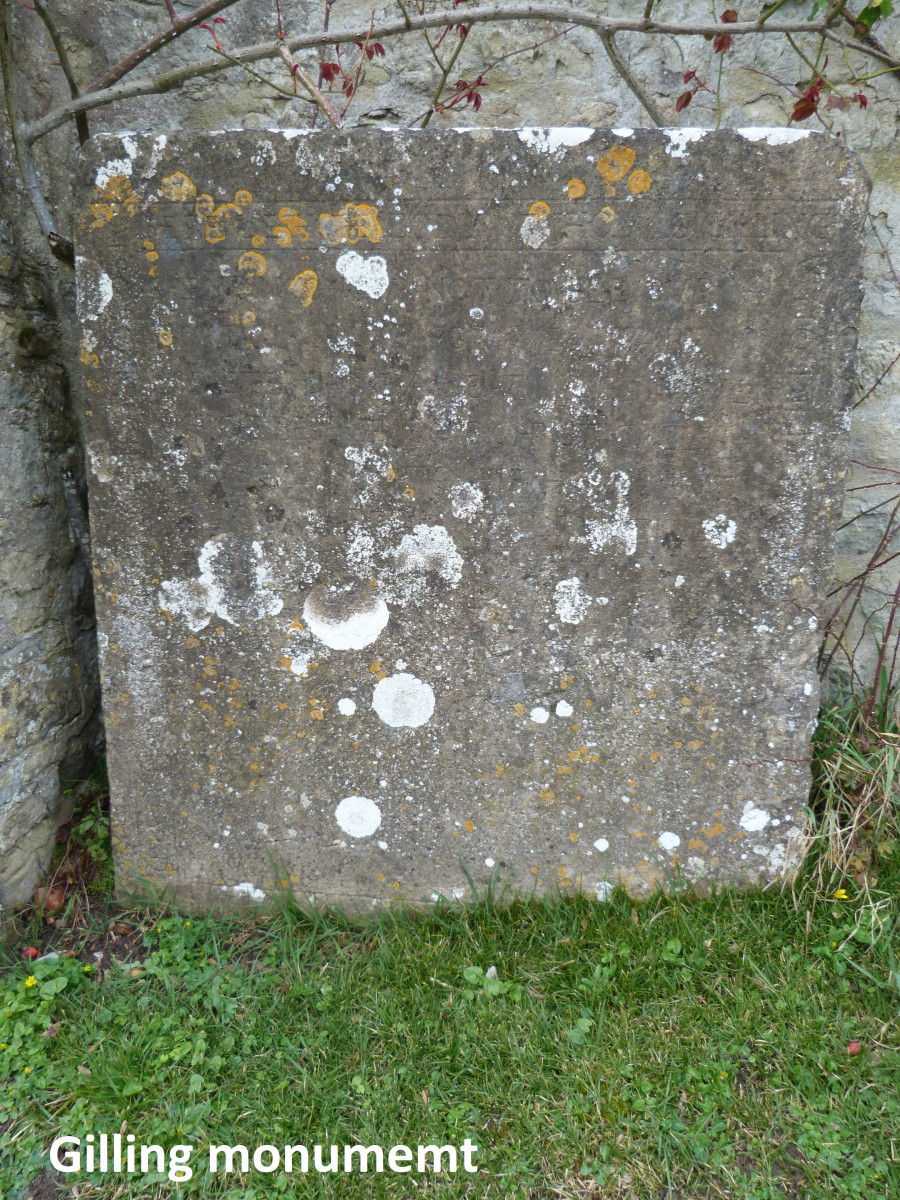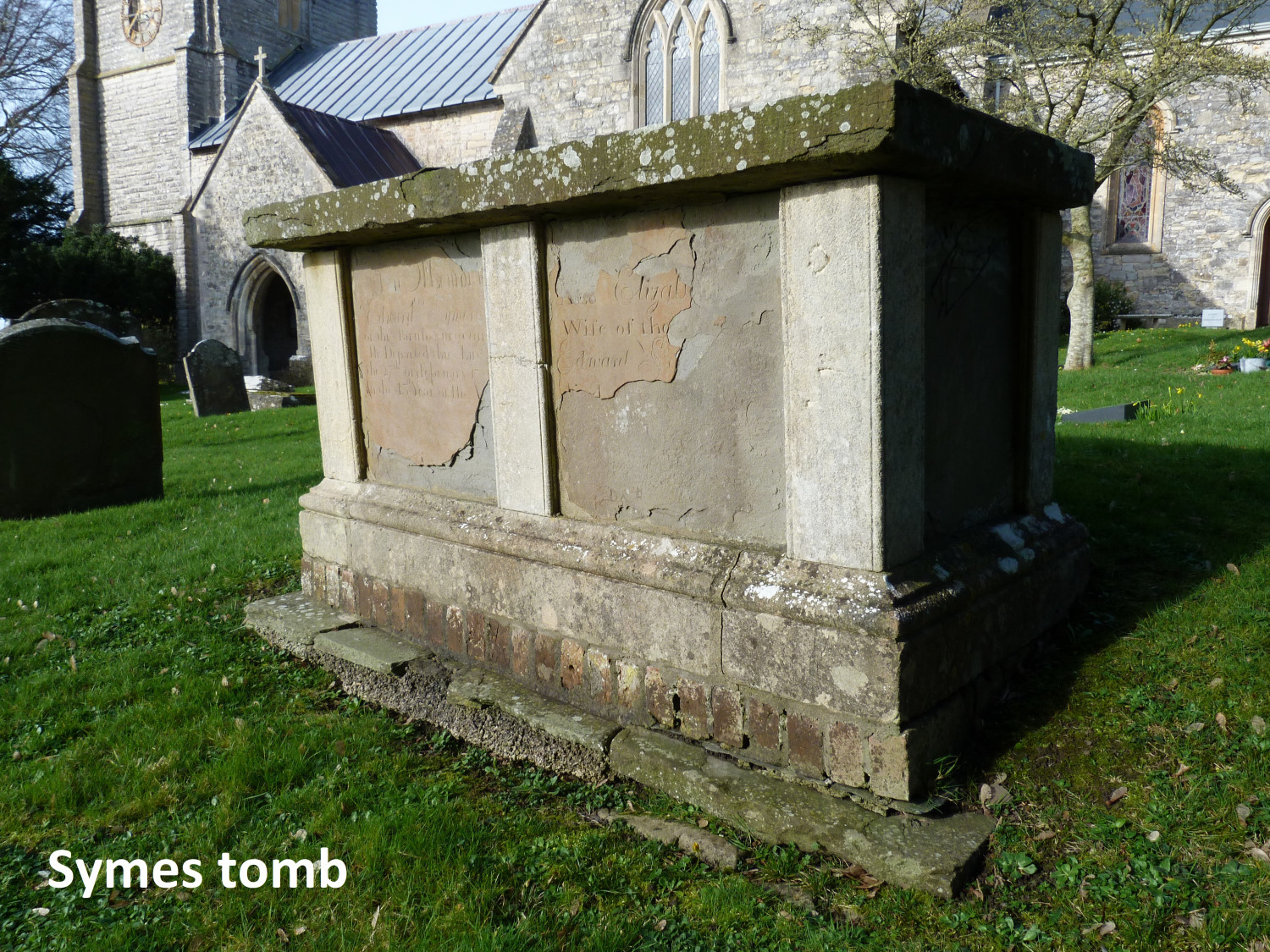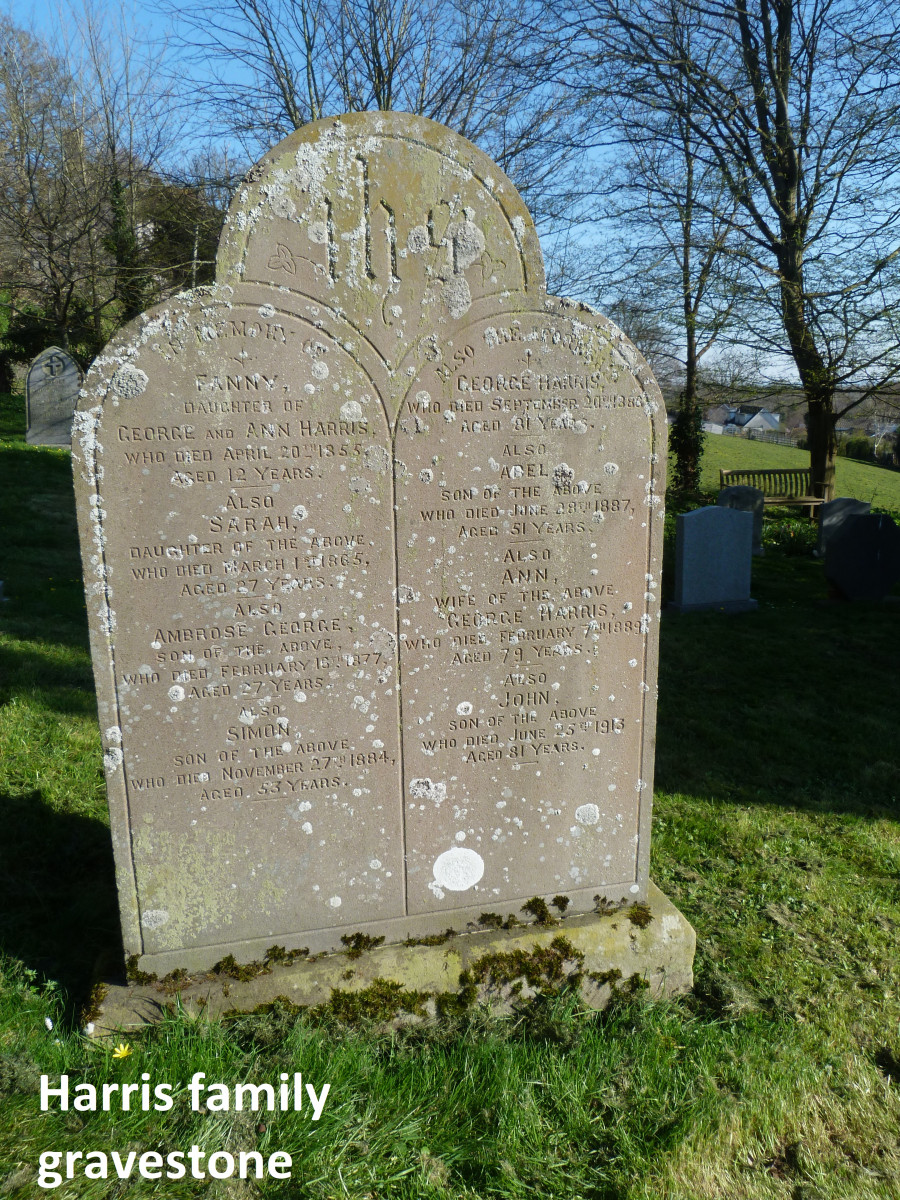


Above are images of three monuments / gravestones that cover a period from the 17th to the 19th century
Gilling monument
Thomas Gilling lived in South Brent during the 17th century. During the Civil War he helped his friend John Somerset in an incident in which Royalist troops ran amock in the village causing considerable damage to local properties (for an account of the incident click here). He was imprisoned with John Somerset and later released when Parliamentary forces gained the upper hand. He died in 1658. His memorial is considerably less flamboyant than his friend's, and is situated just to the left of the vestry door. The inscription on the stone slab reads:
Friend, wonder not to see our mortal grave for we were born, therefore, a death must have, which being come Christ calls our souls in his house, but here our corpse must lie until Judgement come and then united shall they be to-gether and rest with God unchangeable forever.
Symes tomb
In the medieval period wealthy people were buried inside the parish church. A memorial stone was often laid over the tomb. The common people were buried in unmarked graves in the churchyard. From the 17th century gravestones began to be erected over graves. If you were wealthy you could go one stage further and erect a chest tomb. These were also known as table tombs because of the flat surface on the top. This type of tomb became very were fashionable amongst the wealthier classes in the 18th century. A brief account of the background to a Parish Surgeon's life can be read by clicking here.
The inscription commemorating Elizabeth Symes has been completely lost and that of Edward Symes partially lost. A project to conserve the tomb and reinstate these inscriptions is in the final stages of consideration and we hope that this project will be completed by 2022.
Harris family gravestone
The Harris family gravestone not only provides an example of how families remembered their dead in the late 19th and early years of the 20th century but is also a social history of a husband and wife who had six children. Five of these children predeceased them.
George Harris died in 1888 aged 81
Ann Harris his wife died in 1889 aged 79
Their children were:
Fanny – died aged 12 in 1855
Sarah – died aged 27 in 1865
Ambrose George – died aged 27 in 1877
Simon – died aged 53 in 1884
Abel – died aged 51 in 1887
John – died aged 81 in 1913
A descendant of the Harris family lives in Brent Knoll. The project will work with him to establish more about the social and medical histories of the family in the Victorian period.